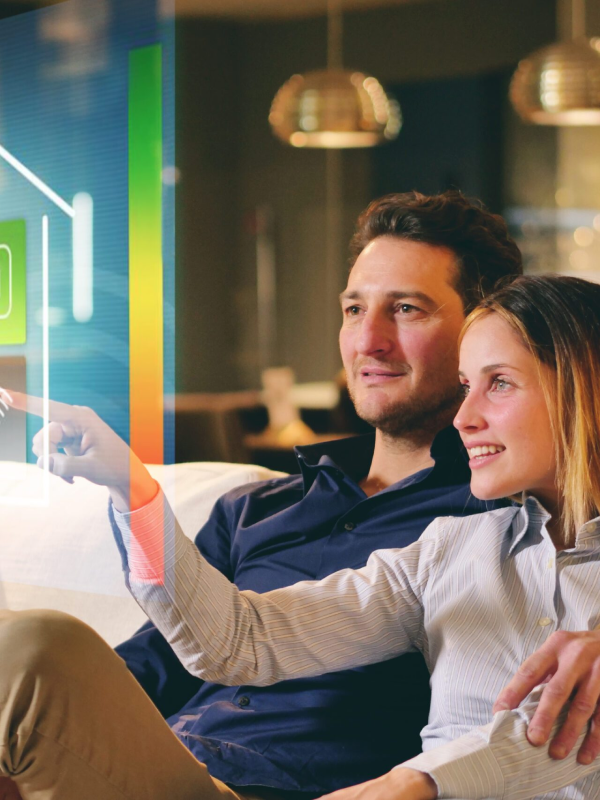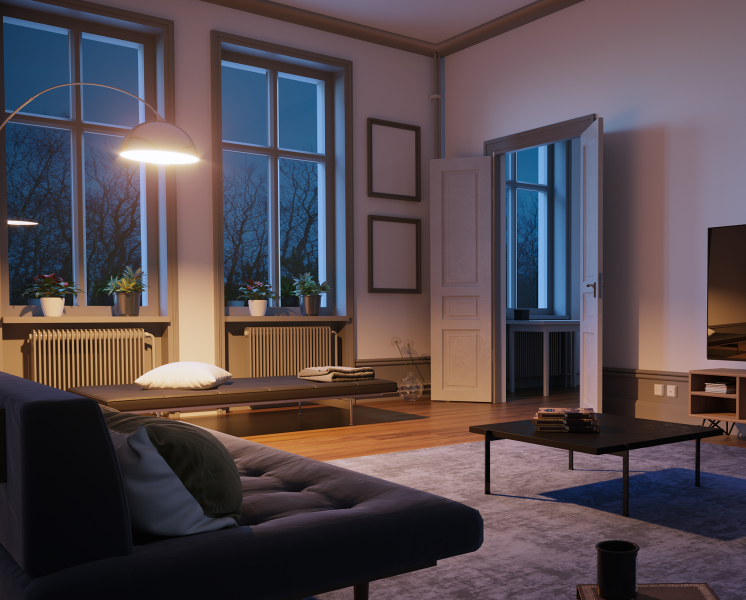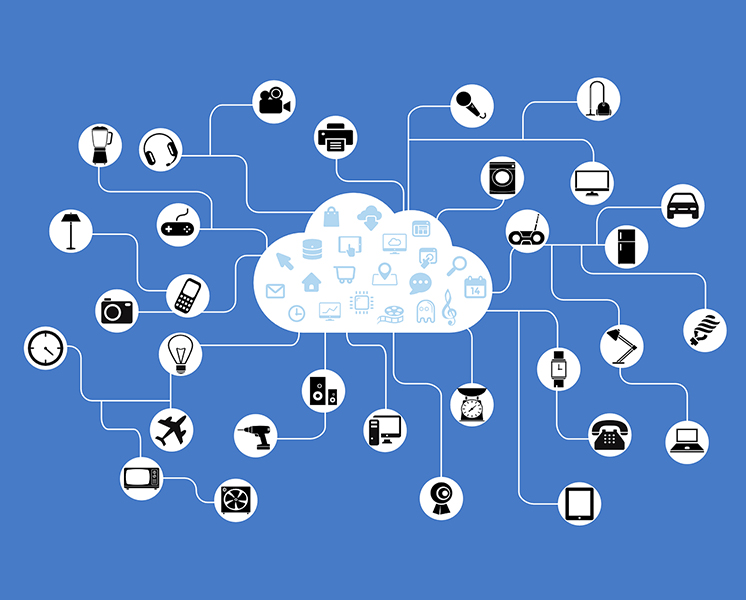Have you ever had a nagging sensation in the back of your mind when you’re out running errands that you forgot to do something important before leaving your home?
Ever wonder if you forgot to turn off the stove? Did you remember to turn on the security alarm? Are the pets okay?
Who’s that person ringing your front doorbell? Did you ever think you could monitor someone entering your backyard while you weren’t at home? Are your teenagers having a party while you’re out? The list is endless.
You can stop those worries in their tracks by installing smart home technologies in your house. Smart home technology is any device, such as appliances, lights, security system, stereo, or your air conditioning system, that connects to your home Wi-Fi network and can be controlled from your smartphone or other mobile devices.
Never before in history has so much affordable convenience, comfort and safety been available to the average homeowner. There are home automation systems available for any budget. You can choose to start slow and small, for example, merely controlling your entryway lighting at night, and then seamlessly add more automation as your comfort level and your budget allows.
- Part 1. How Does Smart Home Technology Work?
- Part 2. Advantages of Smart Home Technology
- Part 3. Conclusion
Part 1. How Does Smart Home Technology Work?
The biggest problem with coming up with a definition of smart home technology is that there’s no standard protocol for all or even most systems. If you want an intelligent home, you must research and invest in the proprietary ecosystem of your chosen vendor, like Google Home or Amazon Alexa. That’s because you can’t use Google devices with Alexa and vice versa, and the same goes for all the smaller vendors.
Once an ecosystem has been selected, you build your home network by creating a smart hub. The hub is connected to your home Wi-Fi and discovers any intelligent devices that are on your local area network, like household appliances, thermostats, and lighting; from that point on, the hub can control the devices through your smartphone or tablet using an internet connection.
Smart home technology is designed to be used with wireless or hard-wired networks, providing homeowners with added comfort, convenience, and utility bill savings.
The oldest home automation technology is called X-10 devices. The x-10 open protocol was created in 1975 by Pico Electronics in Glenrothes, Scotland. It’s a simple technology that uses the electrical wiring in your home to send signals that turn appliances on and off.
Once an X-10 module is plugged into a standard electrical outlet, each appliance you want to control is plugged directly into the module and no additional cabling is required. Digital signals from the devices piggyback over your existing electrical wiring to change the state of connected appliances such as lights and your television to make it appear that your home is occupied when you’re actually away.
Although X-10 powerline communication was useful in its day, it has many shortcomings, and manufacturers and distributors like Evvr - In-Wall Relay Switch have mostly moved on to faster and more reliable Wi-Fi enabled protocols that integrate with Zigbee, Z-Wave, Wi-Fi, and Bluetooth devices.
Newer wireless smart home technologies provide remote monitoring and real-time control of appliances over the internet that is vastly superior to the old problem-plagued X-10 plugin modules. With internet-based systems, you can view your home with internal and external security cameras from a mobile device like a smartphone, tablet, or laptop and know exactly what’s going on in and around your home at all times.
But internet technology lets you do far more than be a passive observer. Sophisticated software on your mobile device gives you the ability to control your home lighting, television, stereo, kitchen appliances, and any other connected devices while you watch.
For instance, if you have pets, you can remotely activate an auto feeder, and through a smart pet camera, watch, communicate with, and console the little critters while they dine—almost as if you were there.
Part 2. Advantages of Smart Home Technology
There are numerous advantages to installing smart home technology for residential use. Smart home technology can make your life much more comfortable, convenient, and safer. You can control any smart device in your home that’s connected to your network from the comfort of your chair, couch, or even your bed!
In fact, you can control your home from any location with internet access. You can receive notifications and alerts at work, in church, or on vacation, about anything you choose to monitor at home. Some of the most common advantages of smart home technology include:
Greater Convenience — Make life easier by warming or cooling your home 15 minutes before you arrive and turning everything off 15 minutes after you leave. Crank up the coffee maker and awaken to the aroma of fresh brew. Turn lights on and off according to your daily patterns without giving them a second thought.
Medical Alerts — With a lightweight and waterproof medical alter button worn around the neck or kept in the pocket of an elderly or otherwise homebound person, medical alerts can be sent to a monitoring center during emergencies. An operator at the monitoring center can notify friends or family of the person in need or dispatch the police or emergency services.
More Security — Ensure outdoor lighting is on when you come home at night. Automatically activate your security system in the proper mode when you sleep and leave home each morning, install motion detection devices around your home for early warning intrusion capability, and live a safer life.
Remote Monitoring — Since you can access your home network from a mobile device, you can receive notifications about any problems that arise at your house. For example, a smart doorbell will let you see and talk to anyone at your front door whether you’re across town or in another state. You can manipulate your thermostat and set the temperature, control lighting, and control any other connected appliance in your home.
Save Money — If you’re careful about how your intelligent technology is set up and installed, it pays for itself and can even turn a profit for years to come. That’s generally possible in countries and states where there are financial incentives to run electrical appliances such as washing machines, dryers, dishwashers, heating and air conditioning, and electric car chargers during off-peak hours.
Security Risks — Although smart home technology can increase the security of your home, it comes with risks of its own because once your devices connect to your Wi-Fi network, they potentially become vulnerable to hackers determined to breach your defenses. For instance:
Complexity — One of the biggest roadblocks to making your home more intelligent is the complexity of some systems makes installation and setup so difficult, that you may actually open the door to unsafe situations due to ignorance. That’s why it’s best to start small and build your home’s IQ gradually as your own understanding of the technology increases.
Default Passwords — One of the easiest ways you give hackers access to your system is by not changing the default passwords on each device. Yes, it may be a bit of a hassle, but you close off the most obvious access point to outsiders.
Denial of Service (DoS) Attacks — You may also be vulnerable to DoS attacks on cloud-based hubs that control your devices, denying you the ability to access your appliances. Such attacks are becoming more common and cloud server companies are scrambling to enhance their firewall technology to combat the trend.
Power Outages — Depending on its configuration, blackouts and brownouts will most likely take down your automated system. Any internet-connected setup will go down with your power supply. If your system has battery backups and uses your phone lines for communication, it will still work. But downed phone lines will take out your automated systems as well. The safest alternative is creating a primary or secondary cellular radio network with adequate battery backup to handle both scenarios.
In Conclusion
Smart home technology trends suggest that home automation is getting more popular by the day as the “internet of things” gains speed despite the drawbacks. As new products are released, many of those drawbacks will be addressed, opening up new markets of consumers waiting for the luxury of innovative home technology to improve their lives.
Until now, smart home tech has been developed in a modular fashion. There are very few automated homes that have been built from the ground up.
Nevertheless, modular systems allow homeowners to plug or remove smart appliances to and from their network as needed, as their lifestyle dictates. This level of flexibility provides an infinite array of possible uses for smart technology with only incremental investments of time and resources.
Whatever your thoughts or feelings about technology may be, the increasing popularity of intelligent homes will continue unabated as more residential uses for advanced automation are invented. If you're interested in Evvr - comprehensive home automation solutions, contact us and give us a chance now!











